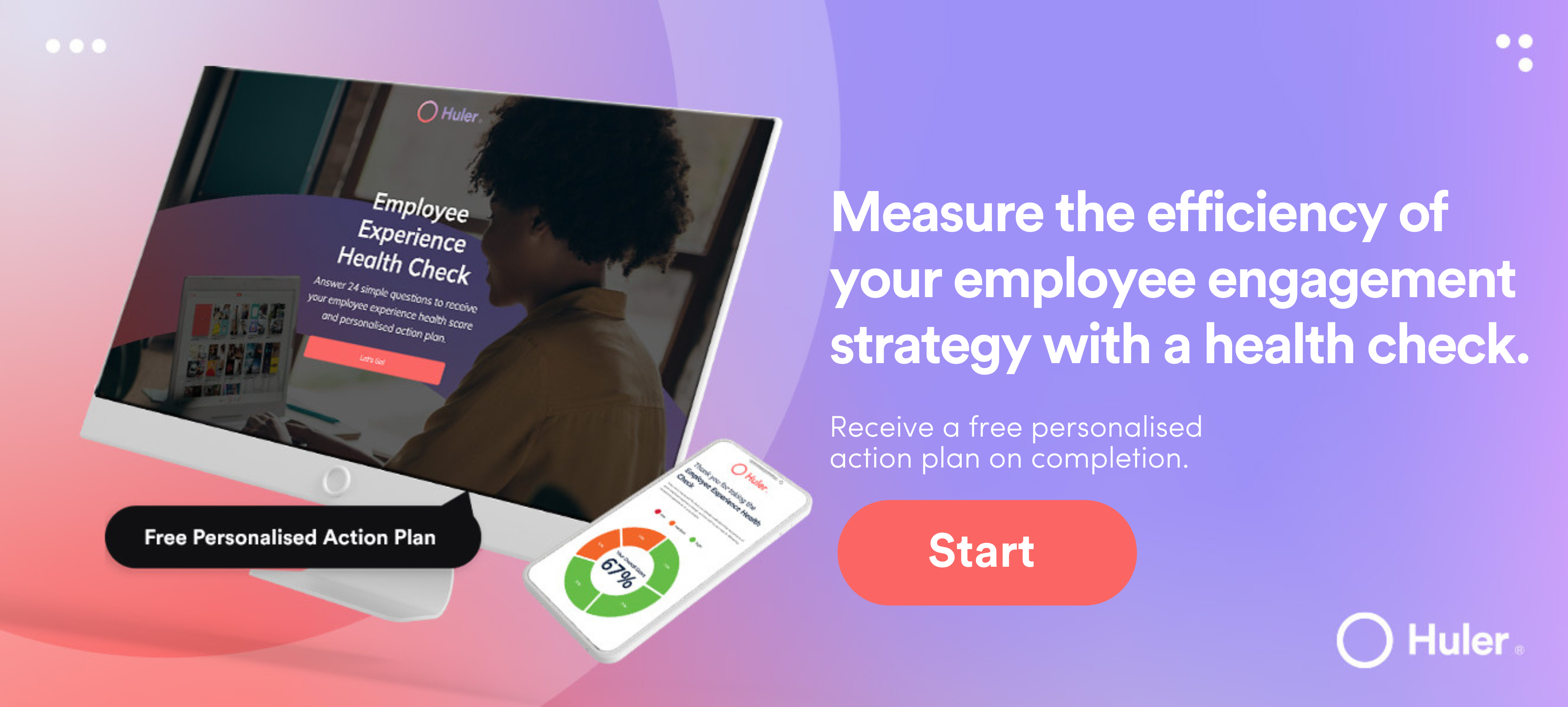You’ve invested in new tech, sent round the doughnuts and painstakingly organised the Friday pub quiz. But something is still missing! Yes, your team seems happy but…not all that motivated or interested in what’s happening in your business. Why is that?
Employee engagement could be the missing link!
Why Employee Engagement Is Important
Employee engagement isn’t necessarily all about job satisfaction or happiness. Rather, it’s a culmination of your people’s attitudes and behaviours in response to your organisations culture, leadership styles and shared values.
But why exactly is it so important?
Show Me The Money
If you like the sound of 21% higher profitability, then employee engagement is your holy grail. But you could look at it in a different way, too.
Disengaged workforces cost companies in the US between $450-$550 BILLION each year. That’s a pretty hefty price to pay for low engagement. Put simply, it literally pays to devise strategies to boost employee engagement.
Get A Competitive Edge
When employees are engaged, they are more creative, innovative, passionate and forward-thinking. We don’t need to tell you just how beneficial these kinds of attributes are to your organisation, especially when it comes to outstripping the competition!
A Culture That Works
Disengaged employees don’t want to take part in workplace culture. Why is this a problem? Well, when your teams aren’t aligned in their shared values and common goals they can’t pull in the same direction.
According to Forbes, an engaged workplace should be centered around company values. But it’s not a one way street. A company’s values and mission shouldn’t just be focused on the business goals, it should also align with the ways that employees want to work and be treated to ensure everyone is singing from the same hymn sheet.
Retain Top Talent
When employees are engaged they are loyal. This means they are more likely to stick around and less likely to have their head turned by a competitor. Highly engaged employees aren’t just satisfied with their jobs, they are passionate about them and invested in succeeding within it both for themselves and the greater good of the organisation.
Companies with the highest engagement rate experience a 59% reduction in employee turnover. In a candidate-led market, retaining talent is a key priority and it’s clear that high employee engagement is one way to do that.
Supercharge Performance
There’s a reason why highly engaged workplaces report higher profitability. It’s because their workforces are more productive and more likely to go the extra mile to deliver fantastic results. Conversely, disengaged workers are more likely to work slower, make more mistakes and compromise on quality. In a study into Fortune 100 companies, researchers found that there was a 1,000% increase in errors among disengaged versus engaged employee populations.
Lower Absenteeism
Low productivity and sick days cost businesses A LOT of money. According to the 2017 Britain’s Healthiest Workplace survey sickness-related absences and presenteesim cost the UK economy a frightening £77.5 billion a year.
And that was before COVID-19 hijacked our lives! In a recent study by Westfield Health, mental health related absenteeism cost UK businesses £14 billion in 2020.
But there is good news! When employees are engaged, absenteeism goes down and productivity goes up. According to research, companies that rank amongst the top 20% of companies with the highest engagement rate experience a 41% decrease in absenteeism.
The long and short of it? Your employees will be more committed and eager to perform – and less likely to pull a sickie when they are engaged.
Improved Safety
Health and safety is a tip top priority for any business, not to mention a legal obligation! If you think employee engagement is a wishy washy topic that has no tangible effect on business outcomes – think again!
Harvard Business Review found that organisations with higher employee engagement reported 48% fewer safety incidents and 41% fewer patient safety incidents.
This solidifies the notion that high employee engagement touches every single outcome in a business. When employees are highly engaged they pay more attention, which not only means the quality of their work is higher, but they work safely too!
Happier Customers
Yes, you read that right. Employee engagement is important because it makes your customers happy too!
The link between employee experience and customer experience has been a well-debated talking point for a while but it’s undeniable that there’s a link between the two. And it makes sense there would be too!
When employees are engaged in their work, they will naturally provide a more efficient, enthusiastic and comprehensive customer service over their disengaged counterparts. In everything they do, they show passion for their work and this contagious energy spreads to customers who, in turn, reciprocate their enthusiasm and vision.
Key Takeaways
So there you have it. Not just one but 9 big reasons why employee engagement is so important. But what’s next?
Well, perhaps it’s time to look inwards now at your own business. Are you measuring engagement? If so, how? And what are the levels like currently? It’ll probably help to take a look at other data you have to hand too such as turnover rates, absenteeism, and employee performance. Are you noticing a pattern?
If so, let’s get your business back on the more profitable and exciting path of high employee engagement. Here at Huler, we believe that technology is one of the greatest enablers for businesses when paired with the right leadership styles and culture. That’s why we developed HulerHub, an all-in-one employee engagement platform that saves time, brings your teams closer together, encourages wellbeing and saves you money.
Want in? Of course you do! If you fancy giving Huler a whirl, book a demo.







